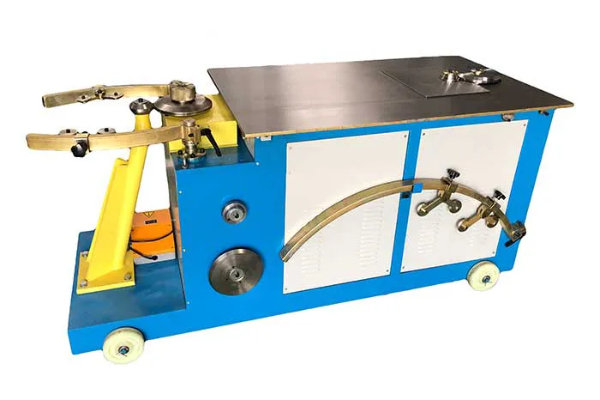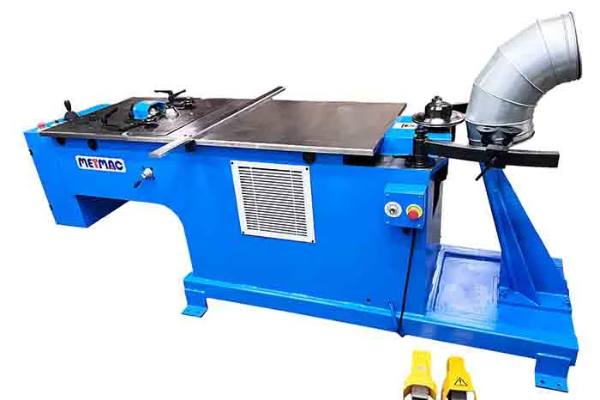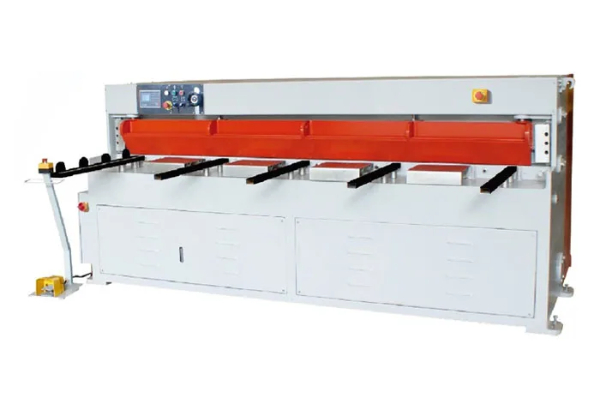
Installing and Setting Up Steel Folding Machines- Key Steps
- By:Metmac
- 2024-06-13
- 96
Steel folding machines are essential tools in the fabrication industry, used to create precise bends and folds in sheet metal. Installing and setting up these machines correctly is crucial for ensuring optimal performance and longevity. Here are the key steps involved in the process:
Site Preparation
1. Choose a suitable location: Select a well-ventilated area with ample space for the machine and its components. Ensure the floor is level and sturdy enough to support the machine’s weight.
2. Provide necessary utilities: The machine requires a stable power supply, water connection for cooling, and compressed air for pneumatic components. Ensure these utilities are accessible and meet the machine’s specifications.
Unloading and Positioning
1. Unloading the machine: Use a forklift or crane to carefully unload the machine from the delivery vehicle. Inspect the machine for any damage during transit.
2. Positioning the machine: Place the machine in its designated location. Use a spirit level to ensure it is level. Secure the machine to the floor using bolts or anchor plates.
Electrical and Mechanical Connections
1. Electrical connections: Connect the machine to the power supply and follow the manufacturer’s instructions for wiring and grounding. Use certified electricians to ensure proper installation.
2. Mechanical connections: Install all necessary fittings and hoses for water and compressed air connections. Ensure all connections are tight and secure.
Calibration and Testing
1. Calibration: Adjust the machine’s settings according to the manufacturer’s specifications. This includes setting the bending angle, stroke length, and pressure.
2. Testing: Perform a series of test bends to verify the machine’s performance. Check the accuracy of the bends and adjust settings as necessary.
Training and Operation
1. Training: Train operators on the safe and proper use of the machine. This includes understanding the controls, maintenance procedures, and emergency protocols.
2. Operation: Follow the manufacturer’s operating instructions to ensure optimal performance and minimize downtime.
Maintenance and Troubleshooting
1. Regular maintenance: Perform regular maintenance tasks as recommended by the manufacturer. This includes cleaning, lubrication, and filter changes.
2. Troubleshooting: In case of any issues, troubleshoot the problem by checking electrical connections, mechanical components, and hydraulic systems. Refer to the manufacturer’s manual for guidance.
Safety Precautions
1. Wear appropriate safety gear: Wear safety goggles, gloves, and protective clothing while operating the machine.
2. Keep workspace clean: Clear the workspace of any obstructions or debris.
3. Follow safety instructions: Strictly adhere to the manufacturer’s safety instructions and guidelines to minimize risks.
-
Reliable Sheet Metal Equipment for Sale to Support Precision Fabrication
2025/07/17 -
Advanced Duct Machine AC and Fabrication Solutions from Metmac
2025/07/12 -
The Advantages of Using a Sheet Roll Forming Machine in Manufacturing
2024/09/14 -
How to Optimize Your Laser Sheet Cutting Machine for Maximum Performance
2024/09/12
-
Innovative Solutions from Leading Duct Machine Manufacturers
2025/07/21 -
Efficient Sheet Metal Fabrication with Advanced Duct Folding and Beading Machines
2025/07/21 -
High-Quality Duct Grooving and Sealing Machines for Efficient HVAC Manufacturing
2025/07/21 -
Advanced Sheet Metal Machinery for Precision Fabrication
2025/07/17
-
Integrating Automation with Rectangular Duct Machines for Enhanced Productivity
2024/05/11 -
Metal Shear Machines- Essential Tools for Precision Metal Cutting
2024/05/11 -
Understanding the Role and Function of Steel Strip Slitting Machines
2024/05/11 -
Maintenance Tips for Longevity of HVAC Duct Machines
2024/05/11
-
A Guide to the Latest Innovations in Sheet Metal Folding Machines
2024/11/29 -
Key Features to Consider When Investing in a Sheet Metal Folding Machine
2024/11/28 -
Enhancing Precision with Advanced Sheet Metal Folding Machines
2024/11/27 -
How to Choose the Right Sheet Metal Folding Machine for Your Workshop
2024/11/26





